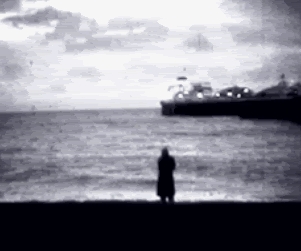
24.4.05

Uma lista faz sempre falta em casa. De qualquer coisa. Até de bandas de post-rock.
Entre várias definições possíveis, uma das mais simples e elucidativas diz que o post-rock é o subgénero que combina guitarras do rock com as maravilhas da tecnologia digital e com outros estímulos sonoros que chegam de fora, e assim investiga novas texturas e diferentes dinâmicas.
Post-rock means using rock instrumentation for non-rock purposes, using guitars as facilitators of timbres and textures rather than riffs and powerchords. Increasingly, post-rock groups are augmenting the traditional guitar/bass/drums line up with computer technology: the sampler, the sequencer and MIDI (Musical Instrument Digital Interface). While some post-rock units (Pram, Stereolab) prefer lo-fi or outmoded technology, others are evolving into cyber rock, becoming virtual. Post-rock draws its inspiration and impetus from a complex combination of sources. Some of these come from post-rock's own tradition - a series of moments in history when eggheads and bohemians have hijacked elements of rock for non-rock purposes (think of the guitar based late 60s music of The Velvet Underground and Pink Floyd, and a subsequent lineage that includes New York's No Wave groups, Joy Division, The Cocteau Twins, The Jesus And Mary Chain, My Bloody Valentine and AR Kane; or the so-called 'Krautrock' of Can, Faust, Neu, Cluster and Ash Ra Tempel; as well as the late 70s/early 80s post-punk vanguard of PiL, 23 Skidoo, Cabaret Voltaire and The Pop Group). Other impulses arrive from outside of rock: Eno, obviously, but also the mid-60s drone-minimalism of Terry Riley and LaMonte Young, as well as musique concrete and electroacoustic music, dub reggae and modern sampladelic genres like HipHop and Techno. Most of the British post-rock groups also explicitly define themselves against Grunge, which was Carducci's dream come true: the fusion of punk and Metal into an all-American nouveau hard rock. - Simon Reynolds
Post-rock means using rock instrumentation for non-rock purposes, using guitars as facilitators of timbres and textures rather than riffs and powerchords. Increasingly, post-rock groups are augmenting the traditional guitar/bass/drums line up with computer technology: the sampler, the sequencer and MIDI (Musical Instrument Digital Interface). While some post-rock units (Pram, Stereolab) prefer lo-fi or outmoded technology, others are evolving into cyber rock, becoming virtual. Post-rock draws its inspiration and impetus from a complex combination of sources. Some of these come from post-rock's own tradition - a series of moments in history when eggheads and bohemians have hijacked elements of rock for non-rock purposes (think of the guitar based late 60s music of The Velvet Underground and Pink Floyd, and a subsequent lineage that includes New York's No Wave groups, Joy Division, The Cocteau Twins, The Jesus And Mary Chain, My Bloody Valentine and AR Kane; or the so-called 'Krautrock' of Can, Faust, Neu, Cluster and Ash Ra Tempel; as well as the late 70s/early 80s post-punk vanguard of PiL, 23 Skidoo, Cabaret Voltaire and The Pop Group). Other impulses arrive from outside of rock: Eno, obviously, but also the mid-60s drone-minimalism of Terry Riley and LaMonte Young, as well as musique concrete and electroacoustic music, dub reggae and modern sampladelic genres like HipHop and Techno. Most of the British post-rock groups also explicitly define themselves against Grunge, which was Carducci's dream come true: the fusion of punk and Metal into an all-American nouveau hard rock. - Simon Reynolds

